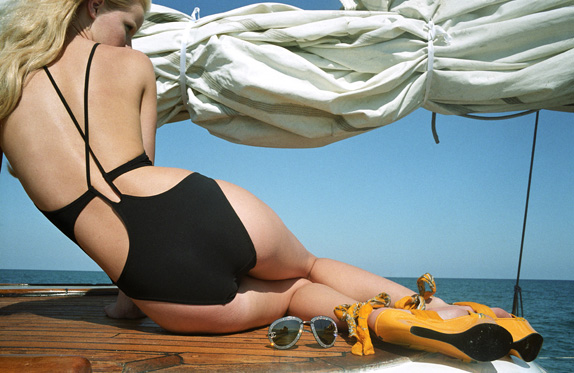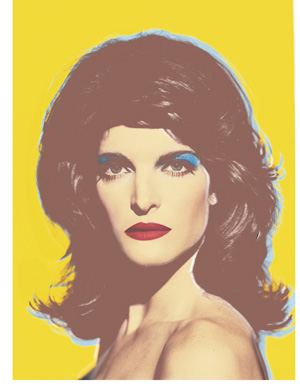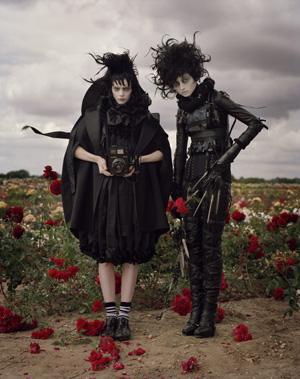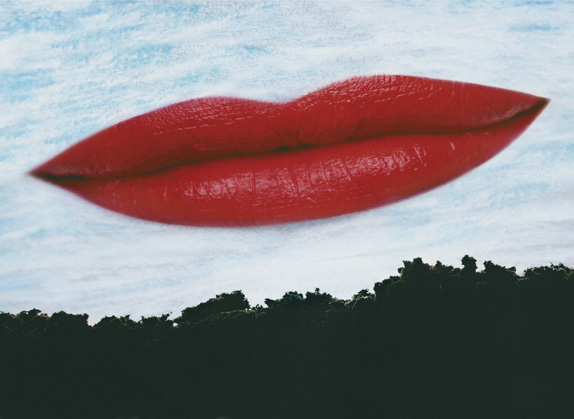【Watch Girl Scout Nookies 15 Online】
At the Bazaar
Fashion & Style

Ralph Gibson, Caroline Winberg (Harper’s Bazaar, May 2005).
It’s easy to overlook that Vogue, seemingly eponymous with the word fashion, debuted after Harper’s Bazaar,America’s first fashion magazine. Steeped longer in the Victorianism that defined the nineteenth century, Bazaarset about cataloguing the changes that an era of colonialism and industrialization brought to women’s dress. The original weekly (titled Harper’s Bazar)saw its first printing in November of 1867, as a slim, sixteen-page newsprint volume featuring drawings and articles on every aspect of fashion. The news item “Colors” reads more like an issue of political importance. (“Bismarck, or gold-brown, is the prevailing shade, and reappears in some guise almost every where. The new shades of green are its only formidable rivals. The deep green known as ‘Invisible,’ now called ‘Mermaid,’ is in great favor.”) An early cover from an 1868 issue shows hand-drawn hairstyles alongside paper-doll-like figures, nodding at French sophistication with hairdo trends like the “diadem of curls” and the “fleur de lis coiffure of braids.”
“Harper’s Bazaar: A Decade of Style” at the International Center of Photography catalogues the transformations that technology of a different sort wrought on women’s bodies. The collection of more than thirty images—vivid color photographs from the past decade under editor Glenda Bailey—features work by famed fashion photographers such as Patrick Demarchelier, Terry Richardson, and Peter Lindbergh, as well as art-world luminaries like Nan Goldin and Chuck Close.

Patrick Demarchelier, Stephanie Seymour (Harper’s Bazaar, February 2002).
The century’s technology manifests itself twofold, on both sides of the camera. In one reference to the decade’s new machinery, a bright-lipped young model’s face is pulled back like plastic. Perhaps less obviously, in one editorial Chloë Sevigny plays a troubled celebrity, showing the voyeuristic quality the camera (especially the digital camera) brought to magazines. One tabloid-like photograph actually shows Sevigny solemnly reading a tabloid article about herself.
Some of the photographs are nearly as cartoonish and abstract as their 144-year-old predecessors. In one, red lips float against a night sky; in another, Stephanie Seymour is rendered in Warholian bubble-gum hues. A pretty blonde’s slender back looks just as anonymous as the long-necked, hand-drawn women who posed in their mantelets at Bazaar’s inception.
The original mission statement of the magazine reads
A Bazaar, in Oriental parlance, is not a vulgar marketplace for the sale of fish, flesh and fowl, but a vast repository for all the rare and costly things of earth–silk, velvets, cashmeres, spices, perfumes, and glittering gems; in a word, whatever can comfort the heart and delight the eye is found heaped up there in bewildering profusion. Such a repository we wish Harper’s Bazar to be.

Tim Walker, Untitled (Harper’s Bazaar, October 2009).
The exhibition makes a case for Bazaar’s place in the magazine world as a home for the fantasy and romanticism of an earlier era. (Perhaps this explains why the median age of the Bazaarreader towers almost a decade above those of Vogueand Elle.) Echoes of Bazaar’s days as a breaking fashion news source resonate in Marc Jacob’s hour-by-hour fashion diary; its past as “the vast repository” for the rare and costly is no more apparent than in a leather-clad Naomi Campbell riding a crocodile. One leaves wondering what whimsical names a nineteenth-century editor might have bestowed on the black, snarly hairstyles of a Tim Burton–inspired shoot or on Lady Gaga’s cotton-candy colored blowout. The “fleur de lis coiffure of braids” may look ridiculous to us now, but in a few months (or moments) it will probably be on Lady Gaga’s head. The word fashionmay derive from the root for invent, but after nearly a century and a half of the magazine, its silhouette hasn’t changed much.

Patrick Demarchelier, Man Ray’s floating lips (Harper’s Bazaar, February 2002).
Ali Pechman is a writer living in Chicago.
Search
Categories
Latest Posts
9 Tech Products That Were Too Early to Market
2025-06-27 04:40Spotify goes down worldwide
2025-06-27 04:07Meghan O'Rourke on 'The Long Goodbye' by Thessaly La Force
2025-06-27 03:58Brand tweets about being an anti
2025-06-27 03:38Ms. Frizzle spotted at Science Marches across the globe
2025-06-27 03:10Popular Posts
Australian Open 2025 livestream: Watch live tennis for free
2025-06-27 03:11The Outcasts of W. Eugene Smith’s Jazz Loft
2025-06-27 03:09Emily Fragos on Emily Dickinson’s Letters by David O'Neill
2025-06-27 02:52Featured Posts
NYT mini crossword answers for January 3, 2025
2025-06-27 03:52Memo to 'The Mandalorian': This is the way (to fix the show)
2025-06-27 03:37Onision finds a home on OnlyFans after getting banned from Patreon
2025-06-27 03:09Facebook role play groups offer a mundane escape from the pandemic
2025-06-27 02:56Biggest Tech Fads of the Last Decade
2025-06-27 02:39Popular Articles
Using a U2F Key to Secure Your Google, Dropbox, and GitHub Accounts
2025-06-27 04:38Western Reading; Should I Write a Memoir? by Lorin Stein
2025-06-27 03:14Newsletter
Subscribe to our newsletter for the latest updates.
Comments (86162)
Openness Information Network
Tips for Playing PlayerUnknown's Battlegrounds
2025-06-27 04:50Reality Information Network
Staff Picks: Franzen's Pot Stash, Fire Season by The Paris Review
2025-06-27 04:15Fashion Information Network
Staff Picks: Franzen's Pot Stash, Fire Season by The Paris Review
2025-06-27 03:48Exquisite Information Network
John Jeremiah Sullivan Wins Prize, Does Paris Review Proud by Lorin Stein
2025-06-27 03:39Dream Information Network
Ms. Frizzle spotted at Science Marches across the globe
2025-06-27 03:25